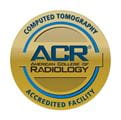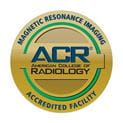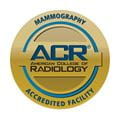Denver Health’s Department of Radiology offers a broad range of imaging services for the screening, diagnosis and treatment of acute/chronic diseases as well as emergent/trauma injuries.
A majority of the above noted imaging services are provided to both Denver Health’s inpatient and outpatient populations. We serve patients of all ages. Clinical conditions of Denver Health’s patient client base range from individuals seeking health wellness and maintenance services to critically ill patients and trauma victims.
The CT, MRI and mammography sections of Radiology are nationally recognized and fully accredited by the American College of Radiology (ACR). The ACR awards accreditation to health care institutions for achievement of high practice standards as validated through peer review evaluations of a facility’s operations.



Bone Densitometry (DXA)
A DXA study is an imaging study that is used to measure the density of bones to assess their strength. This measurement tells the physician whether there is decreased bone mass. This is a condition in which bones are more brittle and prone to break or fracture more easily. DXA studies are used mainly to diagnose osteopenia/osteoporosis and are also considered to be an accurate way to estimate fracture risk.
Breast Imaging
- Breast Biopsies
- Breast biopsies are performed so that a physician can remove cells from a suspicious area of a patient’s breast. Patients needing a breast biopsy do not necessarily have cancer; however, undergoing a biopsy procedure is the only way to rule out cancer.
- Breast Magnetic Resonance Imaging (MRI)
- MRI imaging of the breast uses strong magnets instead of radiation to make very detailed pictures of the breast and surrounding soft tissue. For certain patients at high risk for breast cancer, a screening MRI may be recommended along with a screening mammogram. For patients who have already been diagnosed with breast cancer, a breast MRI may be recommended in order to help measure the size of the cancer, look for other tumors in the breast and to check for tumors in the opposite breast.
- Mammograms
- Screening mammograms are used for early detection of breast abnormalities. Diagnostic mammograms are used to further investigate a finding, such as a mass, found on the screening mammogram.
- Breast Ultrasound
- Ultrasounds of the breast use sound waves to create a picture of the tissues inside of the breast. Breast ultrasounds are used in addition to others tests such as a mammogram or breast MRI.
Computed Tomography (CT)
CT imaging studies are examinations that use a computer linked to radiology equipment to make a series of detailed pictures of areas inside the body. The pictures are taken from different angles and are used to create three-dimensional views of bones, tissues and organs. A dye may be injected into a vein or swallowed to help the tissues and organs show up more clearly. A CT scan may be used to help diagnose disease, create treatment plans or to find out how well medical/surgical/radiation treatments are working for a patient.
General Radiography (X-ray)
X-ray uses a very small dose of ionizing radiation to produce pictures of the body's internal structures. X-rays are the most frequently used form of medical imaging. They are often used to help diagnose fractured bones, look for injury or infection, and to locate foreign objects in soft tissue. Some X-ray examinations may use an iodine-based contrast material or barium to help improve the visibility of specific organs, blood vessels, tissues or bones.
Interventional Radiology (IR)
Interventional Radiology is a medical sub-specialty of radiology that uses a wide range of minimally invasive, image-guided procedures to diagnose and treat diseases. The concept behind interventional radiology is to diagnose and treat patients using the least invasive techniques currently available in order to minimize risks to patients and improve health outcomes. The range of diseases and organs amenable to interventional radiology are extensive and include, but are not limited to, vascular, gastrointestinal, hepatobiliary, genitourinary, pulmonary, musculoskeletal and the central nervous system. Generally, interventional procedures have less risk, pain and recovery time in comparison to open surgery.
Magnetic Resonance Imaging (MRI)
MRI is a non-invasive method of producing detailed images or pictures of the human body using a large magnet, radio waves and computer. MRI examinations pose no risk to the average patient if appropriate safety guidelines are observed. Some conditions may make it inadvisable to have an MRI study.
Nuclear Medicine / PET
Nuclear Medicine uses small amounts of radioactive material to diagnose or treat a variety of diseases, including types of cancers, heart disease and other abnormalities within the body. Unlike other imaging techniques that focus on depicting structures (e.g., bones, ligaments and organs), nuclear medicine examinations focus on depicting physiologic processes within the body. As an example, radiologists can use nuclear medicine examinations to study sugar metabolism, cell receptor expression or other chemical activity inside a patient’s body.
Ultrasound
Ultrasound (also called sonography) is an imaging method that uses high-frequency sound waves to produce images of structures within a patient’s body. These images can provide valuable information for diagnosing and treating a variety of diseases and conditions. Most ultrasound examinations are performed using an ultrasound device (termed transducers or probes) outside of a patient’s body; however, some ultrasound examinations require placement of a device inside a patient’s body.


